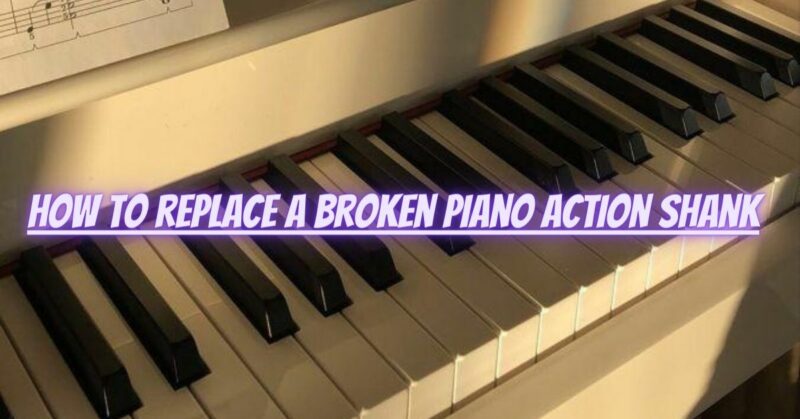Replacing a broken piano action shank is a complex task that requires a thorough understanding of the piano’s action mechanism and specialized tools. It is recommended to seek the assistance of a professional piano technician to perform this repair. However, if you have some experience and are confident in your skills, you can attempt to replace a broken piano action shank following these general steps:
Note: Before starting the repair, make sure you have the correct replacement shank that matches the broken one in terms of size and shape.
Tools Needed:
- Piano action repair kit (including new shank)
- Regulation screwdriver
- Key easing pliers
- Needlenose pliers
- Screwdriver set
- Wood glue
- Sandpaper
- Felt strips
- Felt punchings
- Rubber cement
Steps:
- Prepare the Piano: Place the piano on a level surface and remove the piano action from the piano. If you’re not familiar with this process, consider seeking the help of a professional piano technician.
- Identify the Broken Shank: Locate the broken action shank by examining the piano action carefully. Note the position and angle of the broken shank.
- Remove the Broken Shank: Using needlenose pliers, gently remove any remaining pieces of the broken shank from the key and the hammer rail. Be careful not to damage other action components during this process.
- Prepare the Replacement Shank: If the replacement shank is not pre-cut to size, carefully cut it to match the length of the original shank. Sand the edges smooth for a proper fit.
- Glue the Replacement Shank: Apply wood glue to the replacement shank and carefully insert it into the hole in the key and the hammer rail. Align the shank with the proper angle and ensure it fits securely.
- Secure the Shank: Use wood glue or rubber cement to secure the shank in place. Allow sufficient drying time as per the glue’s instructions.
- Regulate the Key: Reattach the piano action to the piano and regulate the key. This involves adjusting the key dip, let-off, and other parameters to ensure proper touch and responsiveness.
- Replace Felt Strips: Replace any damaged or worn felt strips and punchings that may have been affected during the repair.
- Test the Action: Test the repaired piano action to ensure that the replaced shank functions correctly and that the key plays smoothly without sticking or noise.
Note: Piano action repair and regulation are complex tasks that require precision and expertise. If you are unsure about any part of the process, it is best to seek the help of a professional piano technician. A skilled technician has the experience and specialized tools to perform this repair accurately and effectively, ensuring the piano action functions optimally and safely. Properly maintaining and repairing the piano action is essential for preserving the instrument’s playability and longevity.


